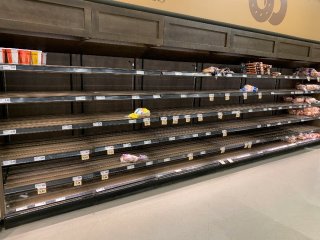Food Security and Young Children
Explore Other Kids and Climate Health Impacts
Find information on how climate change can affect food security, and children’s health. Start by reading the fictional story of two preschool-aged children who are impacted by food insecurity and learn how similar situations can affect kids across the country. Also get tools to help families prepare and cope with outcomes from climate disasters. Finally, check out the regional spotlight.
Malia's Story
Malia and her brother are both under five and are living in a small island community. Their parents are struggling to buy groceries. Food prices have increased after a recent natural disaster affecting the island. The family is struggling with food insecurity and many mental health stressors due to the disaster. The family also lives in a rural area that is not getting the support and resources that the island’s larger city is receiving.

Climate Change Impacts
- Climate change is projected to reduce the availability and affordability of nutritious food, particularly in rural communities that rely on agriculture, fishing, or subsistence lifestyles.1, 2
- Disruptions to food systems and supply chains are expected to increase with climate change. These disruptions are projected to make some food items more expensive and less accessible, particularly for individuals and households living below the federal poverty line, including those in rural areas.2
Impacts on Children’s Health
- As of 2020, over 30% of children in Hawaii were estimated to live in a food-insecure household.3
- Research has shown a link between food insecurity and risk of chronic illnesses like asthma or anemia.4
- Children who are at nutritional risk have been found to have decreased academic performance and more behavioral problems.5
What can I do?
- DO reach out to food assistance programs if you are concerned about your ability to obtain nutritious food for you or your child. Find food assistance programs. The USDA Food and Nutrition Service also provides nutrition assistance to families and individuals affected by a disaster or emergency. You can also call 1-866-3-HUNGRY for help finding local food resources and other social services.
- DO your best to provide your child with proper nutrients, including a variety of fruits and vegetables, whole grains, fat-free and low-fat dairy products, a variety of foods with protein, and oils. Learn more about childhood nutrition.
- Hawaii imports over 90% of its food, and these imports can be threatened by natural disasters and other climate impacts.6 Other Pacific islands also heavily depend on imported food.
- Food grown on the islands is also threatened by climate impacts like drought, ocean warming, and sea level rise.7
- The intensity of tropical cyclones is expected to increase under future climate conditions.7
- Sea surface temperatures and sea level rise are both expected to continue to increase over the next century.7
